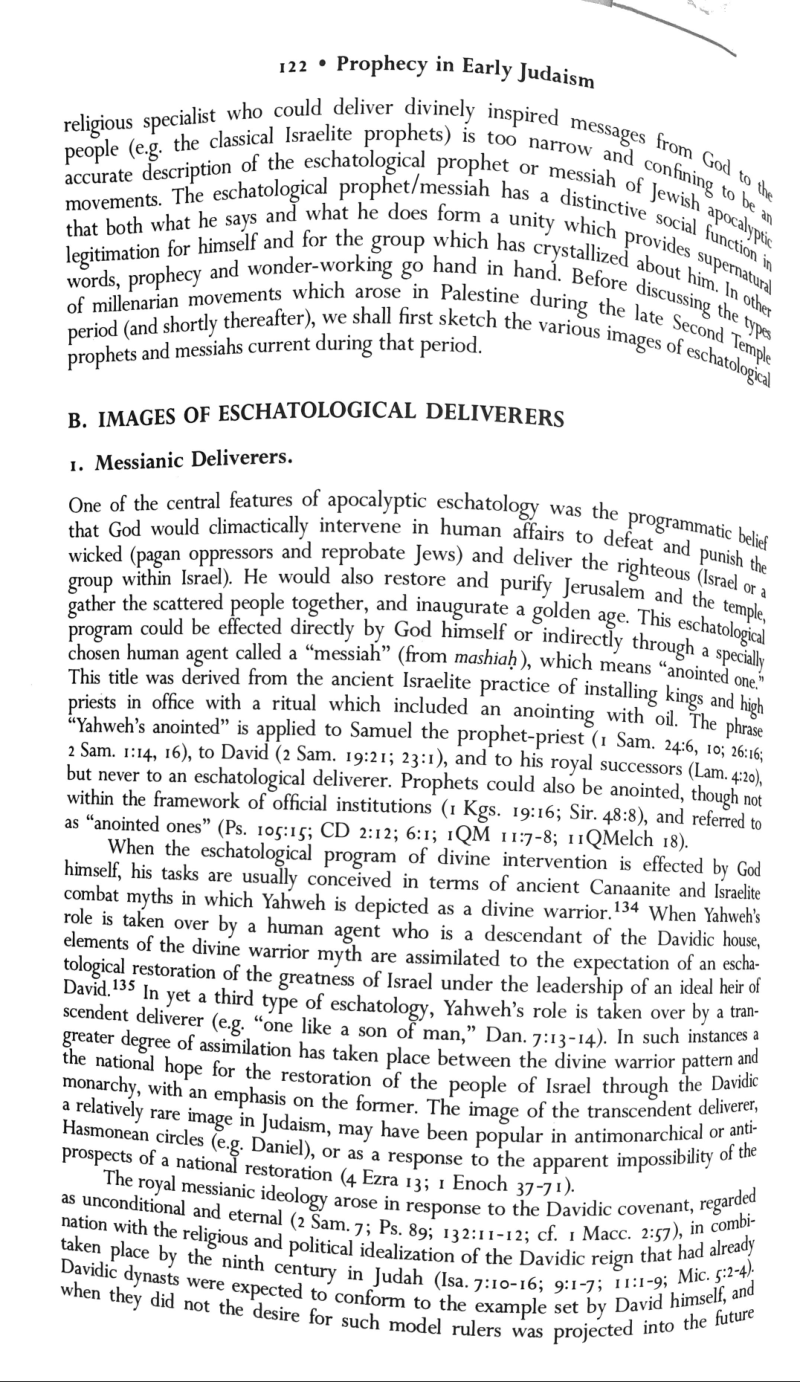David E. Aune discusses the interpretation of the "Son of man" from Daniel 7 in literature contemporary with the New Testament.
- Type
- Book
- Source
- David E. Aune Non-LDS
- Hearsay
- Secondary
- Reference
David E. Aune, Prophecy in Early Christianity and the Ancient Mediterranean World (Grand Rapids, MI: Eerdmans, 1983), 123-24
- Scribe/Publisher
- Eerdmans
- People
- David E. Aune
- Audience
- Reading Public
- Transcription
The expectation of a priestly or Levitical messiah may have had its origin in Zech. 4:14, where Joshua the high priest and Zerubbabel are called “sons of oil,” i.e., “anointed ones.” These figures played a joint role in Haggai and Zechariah’s eschatological vision or restoration. Following the model, the figures of the priestly messiah and the royal messiah are found side by side in the Testaments of the XII Patriarchs (e.g. Test. Reub. 6:5-12; Test. Levi 18:2-9) and in the literature produced by the Qumran community (1QS 9:10-11; 1QSa 12-17; cf. CD 19:10-11; 20:1). In these contexts the priestly messiah is consistently accorded a superior position. This combination of two quite different messianic types functions to bring more purely religious ideals into conjunction with nationalistic and political hopes. If the Qumran community originated in a secession of a group of Hasidim from the Hasmoneans, the idealized relationship between the eschatological deliverers may reflect not only an anti-Hasmonean stance, but also a projection into the future of the actual leadership structure of their community.
Two conceptions of the nature of eschatological delivers were formerly carefully distinguished by scholars. The earthly, human, Davidic messiah, whose role was primarily military, nationalistic, and political, was contrasted with the transcendent, heavenly, messianic deliverer commonly designated as the “Son of man.” Yet these two messianic types are not really separable, for the Son of man traditions in Jewish apocalyptic represent a “transcendental transformation” of Davidic messianic traditions. The designation “Son of man” (Heb. Ben’adam; Aram. Bar-‘enash) is first applied to a transcendental eschatological redeemer in Dan. 7:13-14:
I saw in the night visions, and behold, with the clouds of heaven there came one like a son of man, and he came to the Ancient of Days and was presented before him. And to him was given dominion and glory and kingdom, that all peoples, nations, and languages should serve him; his dominion is an everlasting dominion, which shall not pass away, and his kingdom one that shall not be destroyed.
During the last quarter of the first century A.D. the designation “son of man” is used as a messianic title in the canonical gospels (ca. A.D. 700-100) and in the sixth vision of the apocalypse of Ezra (4 Ezra 13; after A.D. 70). The designation is also used of a heavenly redeemer figure in the Similitudes of Enoch (1 Enoch 37-71, possibly after A.D. 70), but not in a titular sense. In spite of the fact that each of these sources makes use of the Son of man tradition found in Dan 7:13-14, it is likely that they were also influenced by a transcendent Son of man tradition which emerged between the composition of Daniel (ca. 168-165 B.C.) and the formation of the Christian and Jewish apocalyptic Son of man traditions during the first century A.D.
- Citations in Mormonr Qnas
The B. H. Roberts Foundation is not owned by, operated by, or affiliated with the Church of Jesus Christ of Latter-day Saints.

